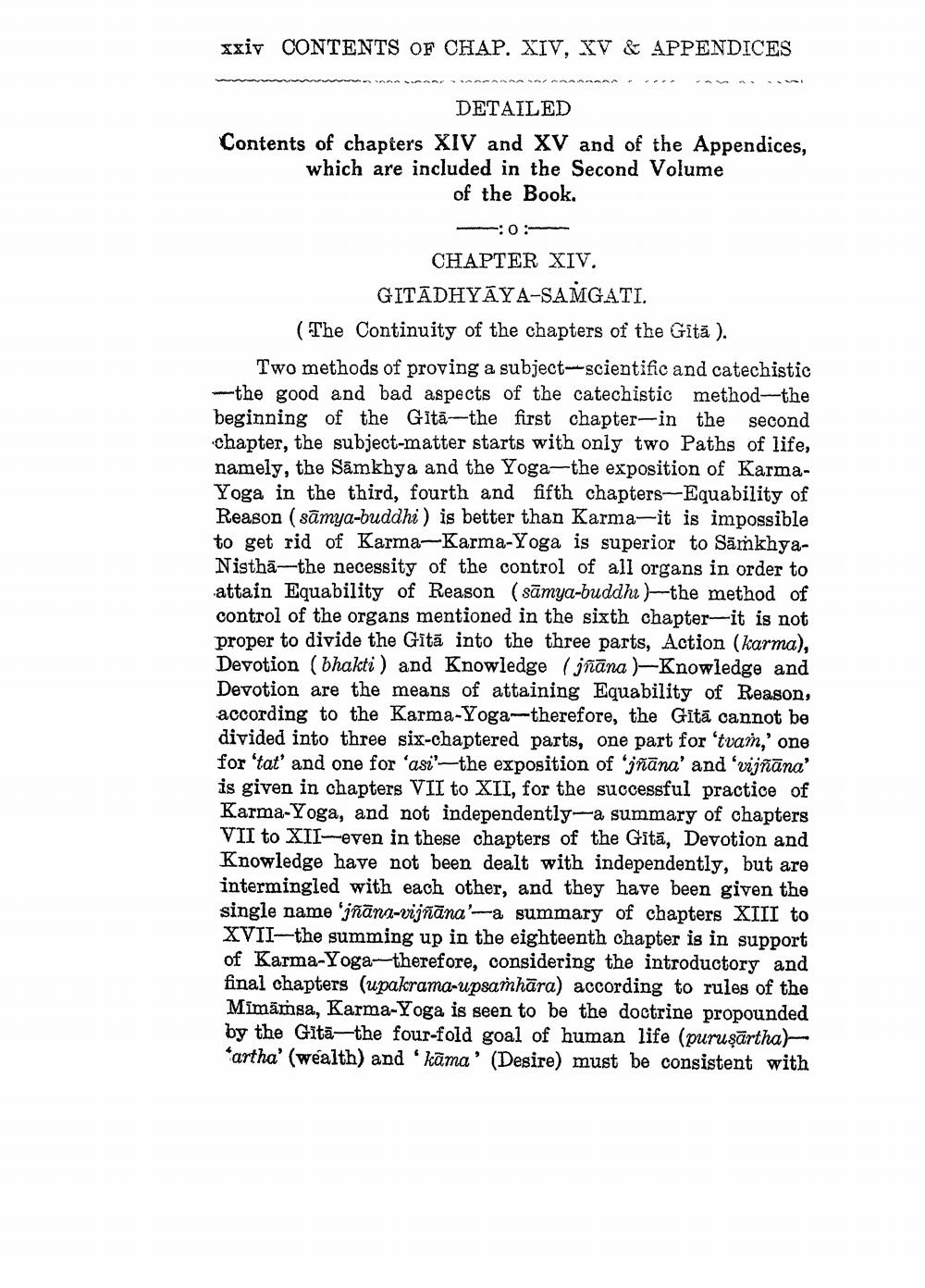________________
xxiv CONTENTS OF CHAP. XIV, XV & APPENDICES
DETAILED Contents of chapters XIV and XV and of the Appendices, which are included in the Second Volume
of the Book.
CHAPTER XIV. GITADHYAYA-SAMGATI. (The Continuity of the chapters of the Gită ).
Two methods of proving a subject-scientific and catechistic the good and bad aspects of the catechistic method-the beginning of the Gitā---the first chapter-in the second chapter, the subject-matter starts with only two Paths of life, namely, the Samkhya and the Yoga-the exposition of KarmaYoga in the third, fourth and fifth chapters-Equability of Reason (sāmya-buddhi) is better than Karma-it is impossible to get rid of Karma-Karma-Yoga is superior to SāmkhyaNisthā--the necessity of the control of all organs in order to attain Equability of Reason (sāmya-buddhi)-the method of control of the organs mentioned in the sixth chapter-it is not proper to divide the Gītā into the three parts, Action (karma), Devotion (bhakti ) and Knowledge (jñāna )-Knowledge and Devotion are the means of attaining Equability of Reason, according to the Karma-Yoga--therefore, the Gītā cannot be divided into three six-chaptered parts, one part for 'tvam,' one for 'tať and one for 'asi-the exposition of 'jñāna' and 'vijñāna' is given in chapters VII to XII, for the successful practice of Karma-Yoga, and not independently--a summary of chapters VII to XIIeven in these chapters of the Gītā, Devotion and Knowledge have not been dealt with independently, but are intermingled with each other, and they have been given the single name 'jñāna-vijñāna'-a summary of chapters XIII to XVII-the summing up in the eighteenth chapter is in support of Karma-Yoga--therefore, considering the introductory and final chapters (upakrama-upsamhāra) according to rules of the Mimāmsa, Karma-Yoga is seen to be the doctrine propounded by the Gitā—the four-fold goal of human life (puruşartha)‘artha' (wealth) and 'kāma' (Desire) must be consistent with




